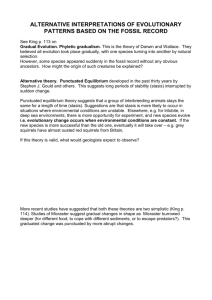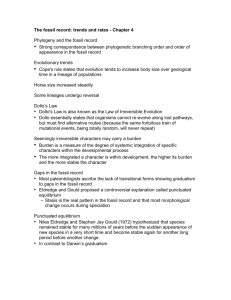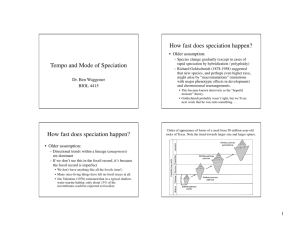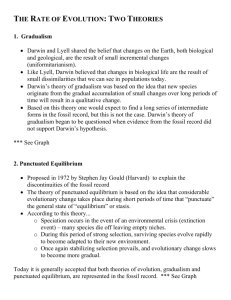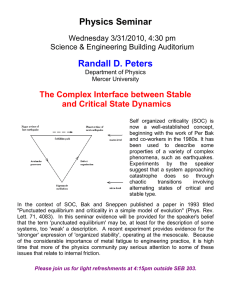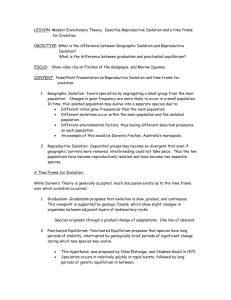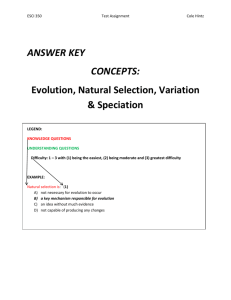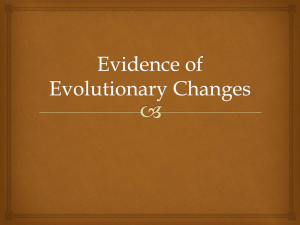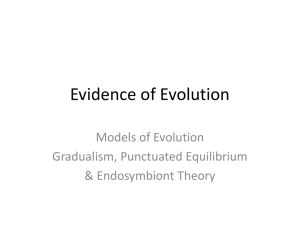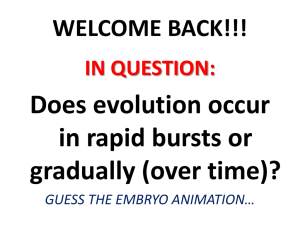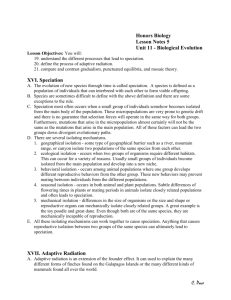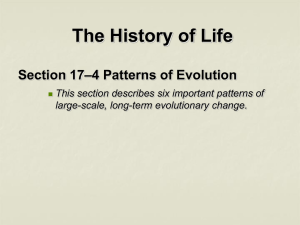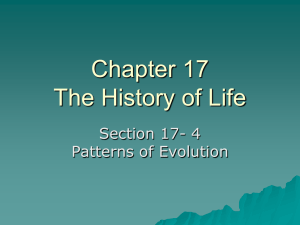Punctuated equilibrium
advertisement
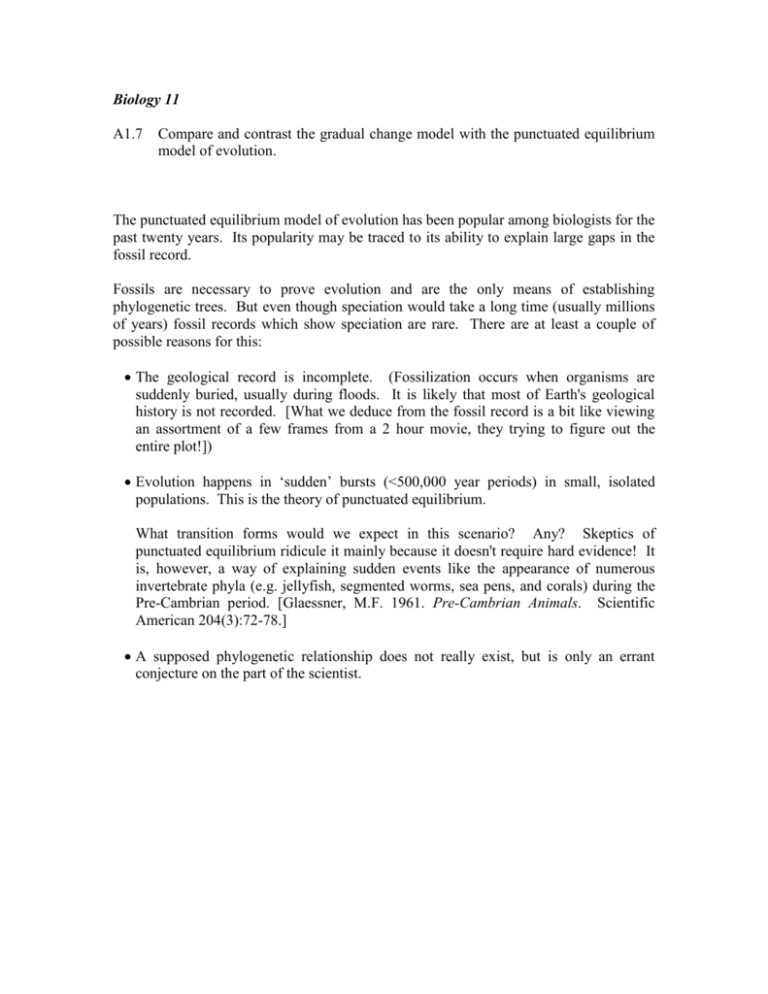
Biology 11 A1.7 Compare and contrast the gradual change model with the punctuated equilibrium model of evolution. The punctuated equilibrium model of evolution has been popular among biologists for the past twenty years. Its popularity may be traced to its ability to explain large gaps in the fossil record. Fossils are necessary to prove evolution and are the only means of establishing phylogenetic trees. But even though speciation would take a long time (usually millions of years) fossil records which show speciation are rare. There are at least a couple of possible reasons for this: The geological record is incomplete. (Fossilization occurs when organisms are suddenly buried, usually during floods. It is likely that most of Earth's geological history is not recorded. [What we deduce from the fossil record is a bit like viewing an assortment of a few frames from a 2 hour movie, they trying to figure out the entire plot!]) Evolution happens in ‘sudden’ bursts (<500,000 year periods) in small, isolated populations. This is the theory of punctuated equilibrium. What transition forms would we expect in this scenario? Any? Skeptics of punctuated equilibrium ridicule it mainly because it doesn't require hard evidence! It is, however, a way of explaining sudden events like the appearance of numerous invertebrate phyla (e.g. jellyfish, segmented worms, sea pens, and corals) during the Pre-Cambrian period. [Glaessner, M.F. 1961. Pre-Cambrian Animals. Scientific American 204(3):72-78.] A supposed phylogenetic relationship does not really exist, but is only an errant conjecture on the part of the scientist. Modern Biology, Towle, Teacher’s ed. p. 249 Read “Rates of Speciation” on page 249. Biology, 3rd ed., Miller & Levine pp. 312 – 313 Read “Gradual and Rapid Evolutionary Change” on pages 312 and 313. (© 2004. C.K. Robinson, Summerland Community Learning Centre, School District No. 67)


